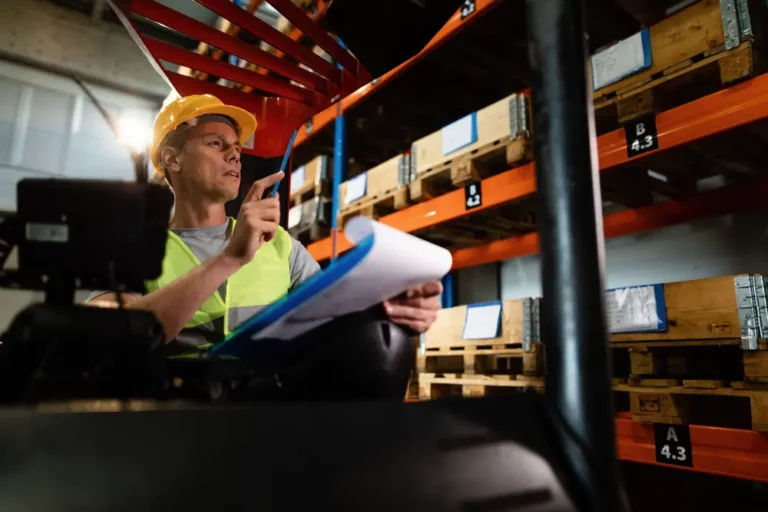Blockchain for Supply Chain Transparency
Most supply chains run on spreadsheets, phone calls, and crossed fingers. Information gets lost between vendors, shipments disappear into black holes, and when something goes wrong, everyone points fingers. It’s expensive and frustrating for everyone involved.
Using blockchain for supply chain transparency basically means creating a permanent trail that can’t be erased or faked. Every time something moves or changes hands, it gets logged automatically. We’re about to get into all the nitty-gritty. The rest of this piece covers the questions most logistics managers are asking about blockchain – and the honest answers.
What Is Blockchain Technology in Supply Chains?
Blockchain is a way to record transactions that can’t be changed once they’re written. Every time a product moves or gets checked, that information goes into a permanent record that multiple parties verify.
With blockchain, everyone uses the same record book that includes:
- Permanent records that can’t be deleted
- Timestamps for every transaction
- Multiple party verification before adding information
- Real-time visibility for all authorized users
The technology works like a permanent audit trail – once something gets recorded, it stays there forever. This gives companies reliable information they can actually trust when tracking their products or resolving issues.
Companies that have implemented blockchain for supply chain transparency are seeing real results. A study covering 150+ implementations across 25 countries showed cost reductions of 20-30% and traceability improvements of up to 75%
Current Supply Chain Transparency Problems
Supply chains today operate like a game of telephone – information gets distorted, delayed, or lost entirely as it passes between different parties. Here are the main issues companies face:
- Information Silos Between Partners
Each company in your supply chain maintains separate systems that don’t communicate with each other. Your supplier uses one tracking system, your manufacturer uses another, and your distributor has their own. When you need to trace a product or investigate an issue, you’re stuck making phone calls and waiting for responses from multiple parties who may have conflicting information.
- Manual Verification Processes
Most supply chain verification still relies on paperwork, emails, and manual data entry. Quality certificates get lost, shipping documents contain errors, and compliance records require constant back-and-forth verification. This manual approach creates delays and increases the chance of human error or fraud.
- Lack of Real-Time Visibility
Traditional systems provide snapshot views of where products were, not where they are right now. By the time you receive an update, the situation may have already changed. This lag makes it nearly impossible to respond quickly to disruptions or provide accurate delivery estimates to customers.
- Compliance and Audit Challenges
When regulators or customers demand proof of compliance, companies scramble to collect documentation from multiple sources. Different partners may have different record-keeping standards, making it difficult to provide consistent, verifiable proof of regulatory compliance or ethical sourcing practices.
These problems compound each other, creating a supply chain environment where transparency is more aspiration than reality.
How Blockchain Solves These Problems
Blockchain addresses each transparency challenge by creating a unified system where information flows automatically and can’t be manipulated after the fact. Here’s how it works:
- Information Silos Between Partners → Creates Single Source of Truth
Instead of maintaining separate databases, blockchain for supply chain transparency establishes one shared ledger that all parties can access. When your supplier records a shipment, that information immediately becomes available to everyone in the network. No more conflicting versions of events or time spent reconciling different records.
- Manual Verification Processes → Instant Verification Capabilities
Blockchain for supply chain transparency allows immediate verification of any claim or certificate. Instead of waiting days for someone to find and send documentation, stakeholders can instantly verify product authenticity, compliance status, or quality certifications directly from the blockchain record.
- Lack of Real-Time Visibility → End-to-End Traceability
Every product gets a unique digital identity that follows it through every stage of the supply chain. From raw materials to finished goods, blockchain creates an unbroken chain of custody that shows exactly where products came from and how they were handled.
This comprehensive approach transforms supply chains from reactive, documentation-heavy processes into proactive, transparent systems where information flows freely and reliably between all stakeholders.
- Compliance Challenges → Enhanced Security Features
The distributed nature of blockchain makes it nearly impossible to hack or manipulate records. Unlike centralized databases that create single points of failure, blockchain requires consensus from multiple parties before any information gets added or changed. This prevents fraud and ensures data integrity throughout the supply chain.
- Audit Challenges → Automated Record-Keeping
Smart contracts can automatically record transactions, inspections, and movements without human intervention. When a shipment reaches a checkpoint, sensors can trigger automatic updates to the blockchain. This eliminates manual data entry errors and ensures information gets recorded consistently across all parties.
Key Features That Drive Transparency
Blockchain for supply chain transparency relies on several core features that work together to create unprecedented visibility and accountability:
| Feature | How It Works | Transparency Benefit |
| Immutable Records | Once information is recorded, it cannot be changed or deleted | Prevents tampering and ensures historical accuracy |
| Multi-Party Verification | Multiple parties must confirm transactions before they’re added | Eliminates single points of failure and fraud |
| Real-Time Updates | Information gets recorded and shared instantly across the network | Provides current status rather than outdated snapshots |
| Smart Contracts | Automated agreements that execute when conditions are met | Reduces human error and ensures consistent processes |
| Distributed Storage | Data is stored across multiple computers rather than one central location | Prevents data loss and eliminates single points of failure |
| Cryptographic Security | Advanced encryption protects data integrity and authenticity | Ensures information hasn’t been altered during transmission |
| Audit Trail | Complete history of all transactions and changes | Provides detailed accountability for every action |
These features work together to create a system where blockchain for supply chain transparency becomes more than just better record-keeping – it becomes a foundation for trust between parties who may never meet face-to-face.
The combination of permanence, verification, and real-time visibility transforms how supply chains operate and how partners interact with each other.
Getting Started with Blockchain
Implementing blockchain for supply chain transparency requires a systematic approach that builds momentum through careful planning and gradual expansion:
Step 1: Map Your Current Supply Chain
Start by documenting your entire supply chain flow, from raw materials to end customers. Identify each partner, the information they handle, and where transparency gaps currently exist.
Look for areas where you frequently lose visibility, face disputes, or struggle with compliance verification.
Step 2: Identify Key Partners and Stakeholders
Determine which suppliers, manufacturers, distributors, and other partners would need to participate in a blockchain system.
Focus on relationships where transparency issues cause the most problems or where partners already show interest in digital solutions. Remember that blockchain for supply chain transparency works best when multiple parties participate, so early partner buy-in is crucial for success.
Step 3: Choose a Pilot Program
Select a specific product line, geographic region, or supply chain segment for your initial implementation. Choose something important enough to matter but contained enough to manage easily. Some good pilot candidates include:
- High-value products
- Items with authenticity concerns
- Supply chains with frequent disputes
This focused approach lets you test blockchain for supply chain transparency without disrupting critical operations.
Step 4: Select the Right Technology Partner
Research blockchain providers with experience in your industry and supply chain implementations. Evaluate their ability to integrate with your existing systems and work with your chosen partners. Consider factors like:
- Scalability
- Ongoing support
- Training resources
- Total cost of ownership.
The right vendor should offer implementation guidance, not just software.
Step 5: Implement and Test
Begin with a limited rollout involving willing partners and a manageable scope. Focus on proving that blockchain for supply chain transparency solves your specific problems before expanding. Monitor results closely, gather feedback from all participants, and document lessons learned. Use this testing phase to refine processes and prepare for broader implementation.
Step 6: Scale Based on Results
Once your pilot proves successful, gradually expand to additional products, partners, or geographic regions. Use the experience and credibility gained from your initial success to encourage broader partner adoption. Each expansion should build on previous learnings while addressing new challenges that emerge as the system grows.
This step-by-step approach minimizes risk while building the foundation for long-term blockchain success in your supply chain operations.
What’s Next?
The shift toward blockchain-powered supply chains is happening gradually, with early adopters already seeing measurable improvements in efficiency and partner relationships. While the technology continues to evolve, the fundamental benefits of permanent record-keeping and shared visibility address problems that aren’t going away anytime soon.
For companies ready to explore blockchain for supply chain transparency, the next logical step involves evaluating how this technology fits within your existing operations and partner ecosystem. If you’re considering blockchain for your supply chain, Click here to know how GoComet can help you assess your specific needs and explore implementation options.



